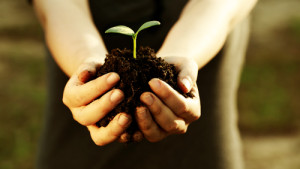This post is also available in:
 English
English
 The History of Arbor Day
The History of Arbor Day
Many civilizations have long celebrated the planting of trees as a symbol of life, spring, and hope for future generations. Some countries today have made it official through nationally-celebrated tree-planting holidays. In the US, this holiday is Arbor Day. Arbor Day has been celebrated since April 10th, 1872 in Nebraska, when newspaper editor J. Sterling Morton convinced the state legislature to “set aside one day to plant trees, both forest and fruit.” He spoke of the importance of recognizing the interrelatedness of life, and of acting in stewardship of the environment. On that first Arbor Day, the citizens of Nebraska, many of them schoolchildren, planted more than a million trees.
Other states soon followed suit, and in 1970, President Richard Nixon declared it to be a national holiday to be celebrated on the last Friday in April. While most national holidays commemorate the past, Morton praised Arbor Day as one that instead celebrates hope for the future. After all, trees will generally outlive the people who plant them, and therefore represent a gift to the next generation.
How Arbor Day Helps the Environment
Planting trees is a great way to help the environment. Trees work hard! Between 1990 and 2007, trees cut one third of fossil fuel emissions by absorbing carbon dioxide, sulfurous dioxide, and nitrous oxide. In turn, when they use that carbon dioxide for photosynthesis, they emit oxygen. In a year, a typical mature tree absorbs 48 pounds of carbon dioxide and releases oxygen in exchange. Their leaves also remove harmful pollutants from the air: in fact, by doing this, urban trees save an average of one life per city per year.
Trees also play an important role in the water cycle. Their roots absorb harmful pollutants from the soil when they take in water. The older and deeper the roots system, the better a tree can do this. Trees also help prevent flooding and runoff, as their leaves direct water down to the soil instead of straight into sewage drains. 100 mature trees capture about 250,000 gallons of water every year. Drinking water that comes from forested watersheds is cleaner, and tastes better.
Planting trees also helps us save energy. When strategically planted around buildings, their shade reduces the amount of energy needed for air conditioning. In fact, they can reduce a home’s air conditioning costs by 15-50 percent. Reducing our energy consumption slows the rate of climate change. Trees do so much for us and the environment we live in, it’s only logical that we should take an official holiday to appreciate them and plant more of them. As the proverb goes, the best day to plant a tree was 20 years ago, but the second-best day is today.







Jeanne thanks for cimnentomg. It did say Bittersweet hickory on the page, but my handy, DNR tree book lists only the Bitternut Hickory and I think that must be what we were handing out. Bitternut hickory is a medium large, somewhat shade tolerant tree that is native to southeastern Minnesota. The nuts are too bitter to eat and people used the nuts for oil at one time. It’s the best wood for smoking meats, though. If I find out more about it, I’ll let you know. Mary